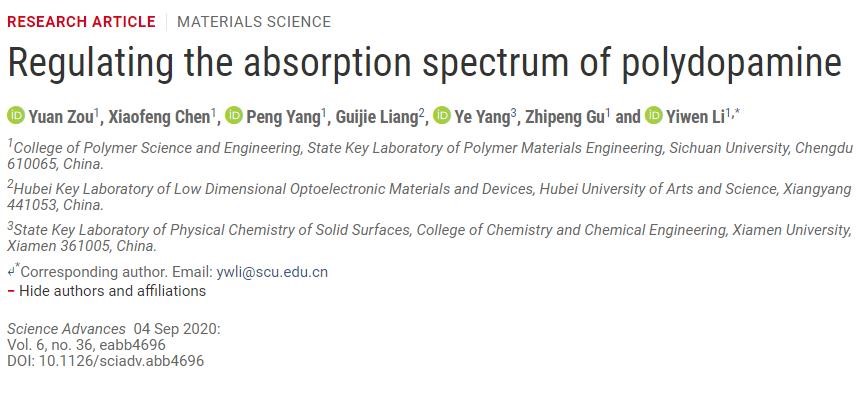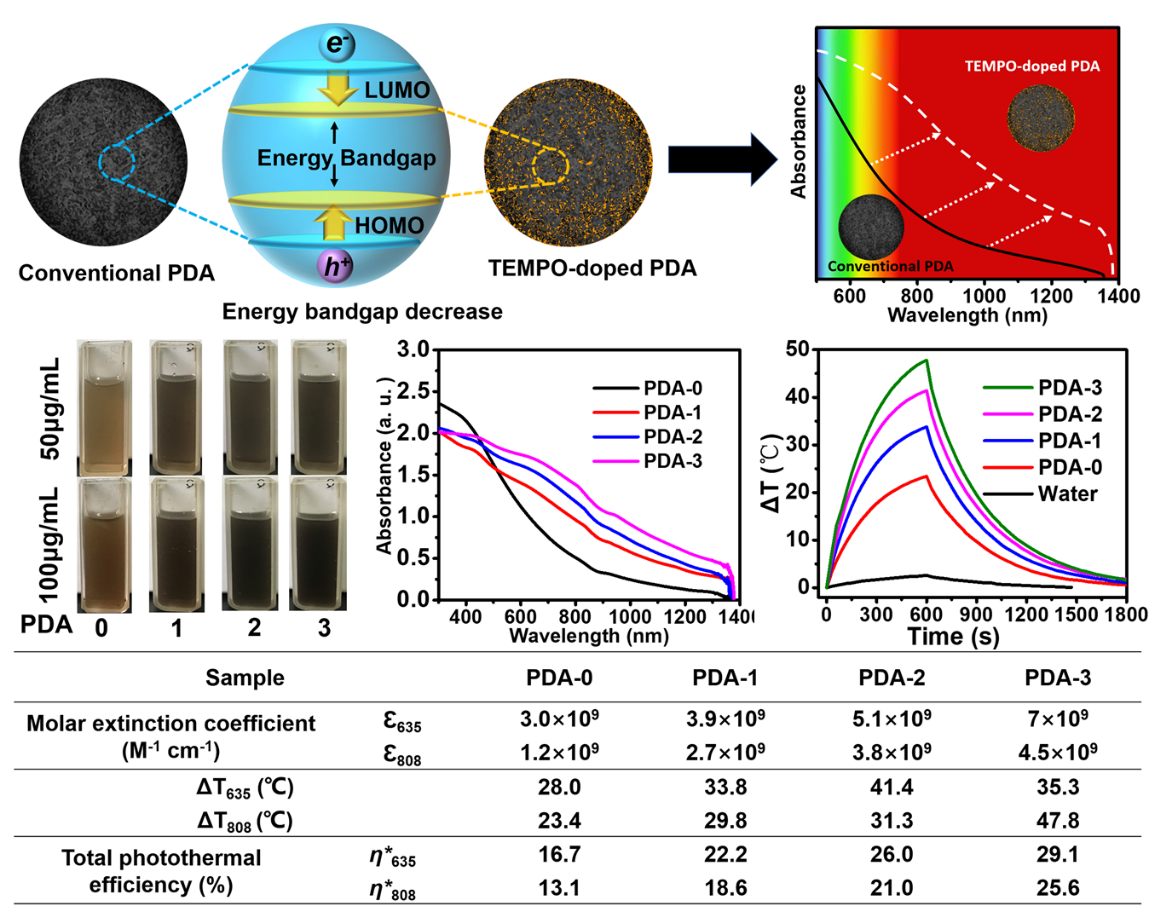In collaboration with researchers from Xiamen University and Hubei University of Arts and Science, Yiwen Li’s research team of SCU’s College of Polymer Science and Engineering has recently published in Science Advances a research paper entitled “Regulating the Absorption Spectrum of Polydopamine”. In this paper, the researchers propose a new method to adjust the absorption spectrum and photothermal behavior of materials, which significantly improved the absorption capacity of materials for visible / infrared light and photothermal conversion efficiency, and successfully obtained artificial melanin and polydopamine which are more "black" than natural materials. Sichuan University is the first work unit of this paper. The first author is Yuan Zou, a first year doctoral student of the College of Polymer Science and Engineering, and Professor Yiwen Li is the corresponding author.

Melanin is an important biomacromolecule pigment which exists in human and animal skin and hair, and plays a key role in many physiological activities. “Melanin describes a class of bio macromolecular pigments widely distributed in nature, which has gradually become the focus of interest due to their outstanding properties, including anti–ultraviolet (UV) (1), metal chelating (2), free radical scavenging (3), and thermoregulation (4, 5). Inspired by nature melanin and mussel adhesive proteins, polydopamine (PDA) has received increasing attentions in the past years for surface modifications, photothermal therapy, and bioimaging (6–9). In addition, the strong adhesive and light absorption properties of PDA are beneficial for interface engineering in water remediation (10, 11). Many synthetic methods including electrochemical polymerization, self-oxidation polymerization, and enzymatic polymerization have been reported to prepare PDA nanomaterial with a decay absorption across the range of 200 to 1400 nm (12, 13). However, only very limited attentions have been paid to regulate its absorption spectrum because of the structural heterogeneity and disorder covalent/noncovalent interactions of PDA. The dopamine polymerization process involves several complicated pathways, including catechol oxidation, rearrangement, chemically cross-linking, physically π-π stacking, and cation-π interaction, which have not been fully understood (8, 14–16)---.” (Introduction)

New strategies for regulating the absorption spectra and photothermal behavior of synthetic melanin and polydopamine
This study provides a new method to rationally regulate the light absorption capacity and photothermal conversion behavior of synthetic melanin and polydopamine. It also provides a new idea to solve the problem of "structure and property regulation of similar melanin materials". It is very promising in the pigmentation of melanin (such as hair dyeing and skin darkening) and the application of photothermal devices. In recent years, the research team of Professor Yiwen Li has been dedicated to the basic and transformation research of artificial melanin and polyphenol functional materials. In 2020, the team has published a number of academic papers in Science Advances, CCS Chemistry, Research, Small and so forth. The relevant patents have been transferred successfully. Currently, the team is working closely with Marubi, Guoyitang, Chang-fa-xiao-zhai to research and develop downstream products. Additionally, Chang-fa-xiao-zhai has set up a special scholarship in Sichuan University to encourage and promote the research on the transformation of melanin materials in the field of cosmetics.
Article link:https://advances.sciencemag.org/content/6/36/eabb4696
